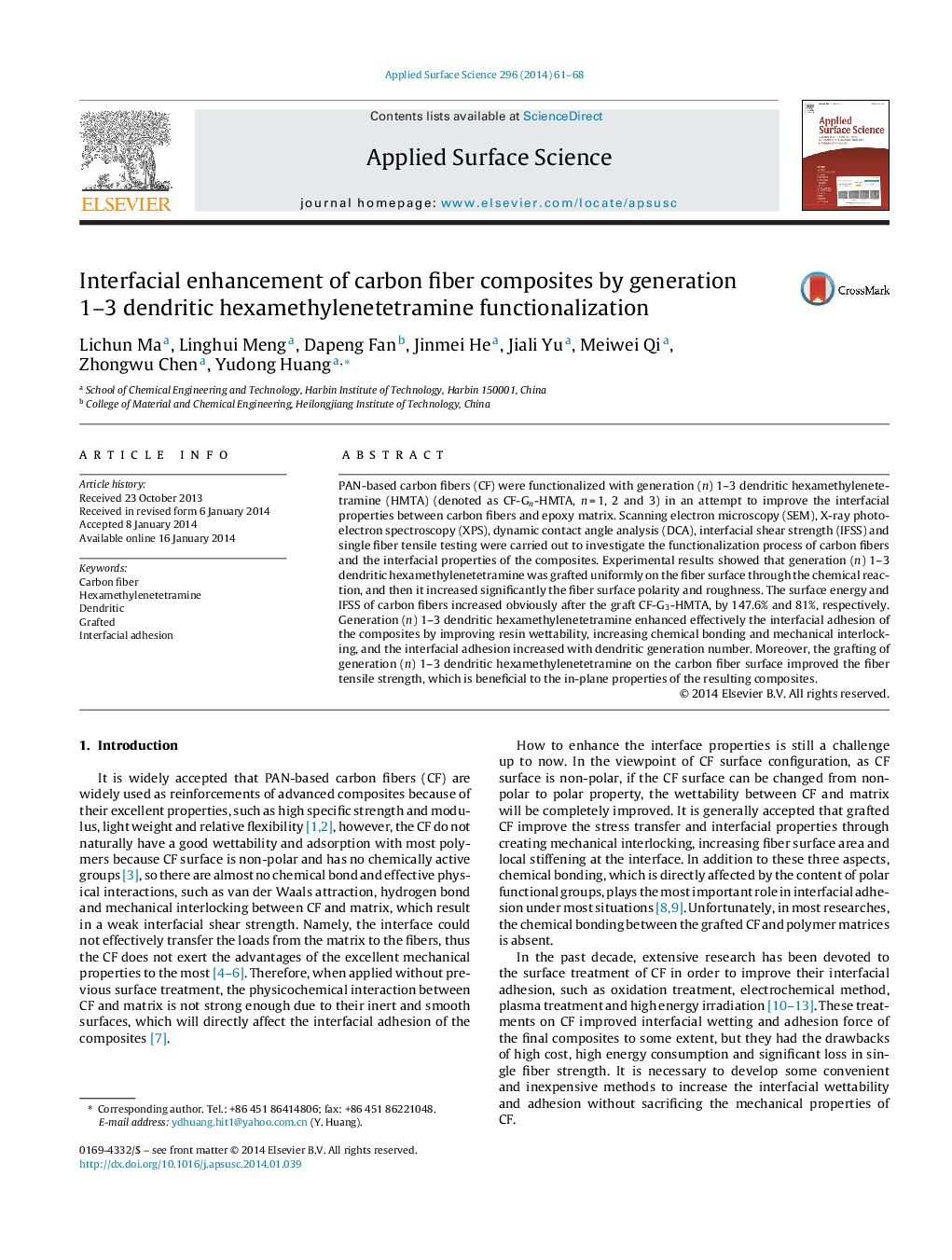| Article ID | Journal | Published Year | Pages | File Type |
|---|---|---|---|---|
| 5359567 | Applied Surface Science | 2014 | 8 Pages |
Abstract
PAN-based carbon fibers (CF) were functionalized with generation (n) 1-3 dendritic hexamethylenetetramine (HMTA) (denoted as CF-Gn-HMTA, n = 1, 2 and 3) in an attempt to improve the interfacial properties between carbon fibers and epoxy matrix. Scanning electron microscopy (SEM), X-ray photoelectron spectroscopy (XPS), dynamic contact angle analysis (DCA), interfacial shear strength (IFSS) and single fiber tensile testing were carried out to investigate the functionalization process of carbon fibers and the interfacial properties of the composites. Experimental results showed that generation (n) 1-3 dendritic hexamethylenetetramine was grafted uniformly on the fiber surface through the chemical reaction, and then it increased significantly the fiber surface polarity and roughness. The surface energy and IFSS of carbon fibers increased obviously after the graft CF-G3-HMTA, by 147.6% and 81%, respectively. Generation (n) 1-3 dendritic hexamethylenetetramine enhanced effectively the interfacial adhesion of the composites by improving resin wettability, increasing chemical bonding and mechanical interlocking, and the interfacial adhesion increased with dendritic generation number. Moreover, the grafting of generation (n) 1-3 dendritic hexamethylenetetramine on the carbon fiber surface improved the fiber tensile strength, which is beneficial to the in-plane properties of the resulting composites.
Related Topics
Physical Sciences and Engineering
Chemistry
Physical and Theoretical Chemistry
Authors
Lichun Ma, Linghui Meng, Dapeng Fan, Jinmei He, Jiali Yu, Meiwei Qi, Zhongwu Chen, Yudong Huang,
